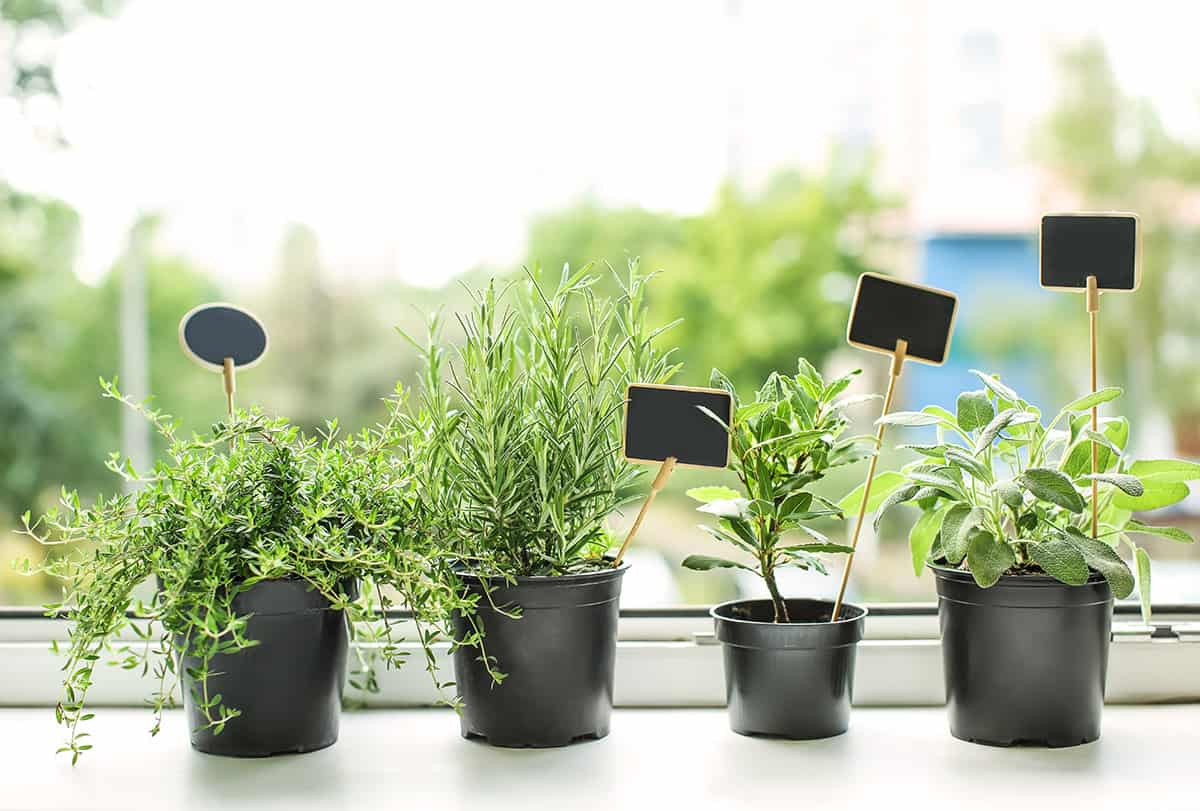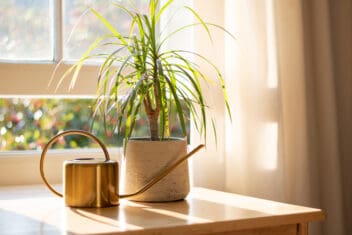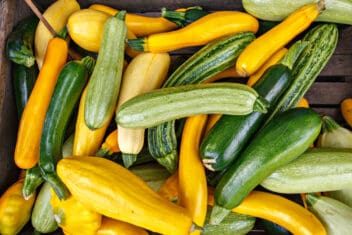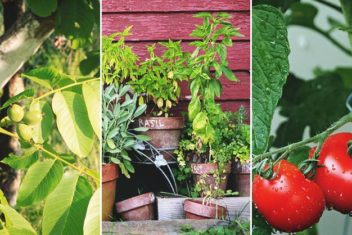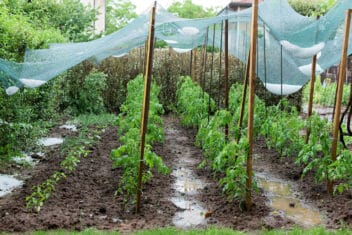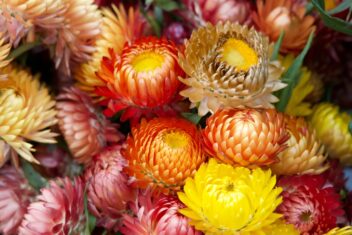You’ve learned the basics of growing a window garden (if you haven’t, check out our guide to windowsill gardening first). Now you’re ready to take things to the next level. It’s time to learn about the best plants to use.
Not only that, but it’s time to learn how to companion plant for your windowsill garden.
It’s easy to assume that you can toss any old plants together, so long as they’ll thrive in a window container. But choosing the right plant combinations is vital.
The Importance of Companion Planting in Containers
The species you choose to grow will depend a lot on the light and space you have available, of course. As you can imagine, the more light you have, the more choices you’ll have. This is because most plants need quite a bit of sunlight to grow properly.
An exception to this, of course, would be plants that grow in partial shade. If you live in a house or apartment that doesn’t get much light through your windows, then choose shade-loving plants for your windowsill garden.
We’ve touched upon some ideas for plants to choose from when designing indoor container gardens, but there’s a lot more info to cover on this topic.
For example, many people try to cram as many plants together as possible, which is bad for all the species involved. On top of that, some people try to combine plants with different needs.
Companion planting for windowsill gardens is an ideal choice, as you can grow a lot of plants symbiotically instead of in competition with one another.
When you’re trying to grow as much as possible in every space you have available; it’s important to maximize that space. Companion planting is an ideal way to do this, as you create self-sustaining harmony between all the species you’re growing.
When you’re planning and researching which plants you’d like to cultivate, make detailed notes about their respective soil and water requirements. We have guides for many of the plants recommended in this story.
If you plant a heavy-feeding, water-loving species in the same container as those that prefer dry, well-drained soil, it’ll wither and die. Similarly, if you put a dry soil-loving plant in with succulents, it’ll rot.
This is an issue that many new gardeners face, especially when they’re planning themed gardens. Fortunately, it’s easy to sort out ahead of time with proper research and planning.
Choose the Right Neighbors
The same type of symbiosis that works well in outdoor gardens is absolutely vital indoors. Companion planting for windowsill gardens is necessary because everything is growing in such close quarters.
If you’ve ever shared a house with a bad roommate who just didn’t fit in, you know how uncomfortable that can be. Plants feel the same way.
You’re aiming to cultivate happy, healthy species, so make sure the ones you choose thrive in the conditions you’re providing them. If your home is hot and dry and you get a ton of south-facing sunlight all day, for example, then choose vegetables and herbs that do well with a lot of heat and sun.
Tomatoes, hot peppers, eggplants, Mediterranean and/or Southeast Asian herbs, etc., will thrive in that kind of space.
In contrast, are you cultivating a windowsill garden that only gets moderate light in a cooler climate? Then aim for Scandinavian and Northeastern European plants instead. Siberian kale, Swedish dill, German lettuces.
You get the idea.
Smaller species are perfectly adapted to container gardens, so try to get your hands on those instead of some full-scale varieties. Let’s look at some of the most popular windowsill gardening plants and which neighbors to plant alongside them.
Tomato Companion Planting

One type of plant that just about every gardener loves to grow is the always-awesome tomato. When you’re doing indoor windowsill gardens, however, you need to cultivate smaller varieties.
A standard beefsteak tomato plant will take up half your living room, whereas cherry or grape tomatoes can be corralled in a small area.
If you’d like to grow tomato plants on a windowsill, choose a long, rectangular planter that you can secure into place on the sill. Then, depending on the planter’s size and the variety you’ve chosen, you can either plant the tomato right in the center or plant one at each end.
Good tomato plant companions are:
Try planting the basil and parsley close to the tomato plants, with the nasturtiums around the edges. They’ll cascade beautifully down the planter’s sides. Then plant a few chives and some small-variety lettuces in the empty spaces between.
Tomatoes and basil need the most sunshine, so place those where they’ll get the most sun. Lettuces and chives can thrive well in the shade so that they can be plopped in the tomatoes’ shadow.
The chives will help with soil health and fend off potential insect issues. As for those lettuces, they’ll create a living mulch to keep moisture in the soil.
All of these plants do far more than just improving each other’s flavors. They all thrive in the same type of soil, have the same water requirements, and work harmoniously together.
Culinary Herbs
Are you cultivating culinary herbs on their own in your windowsill containers rather than interspersing them with vegetables? Then team them up according to their soil and water needs.
Woody Herbs
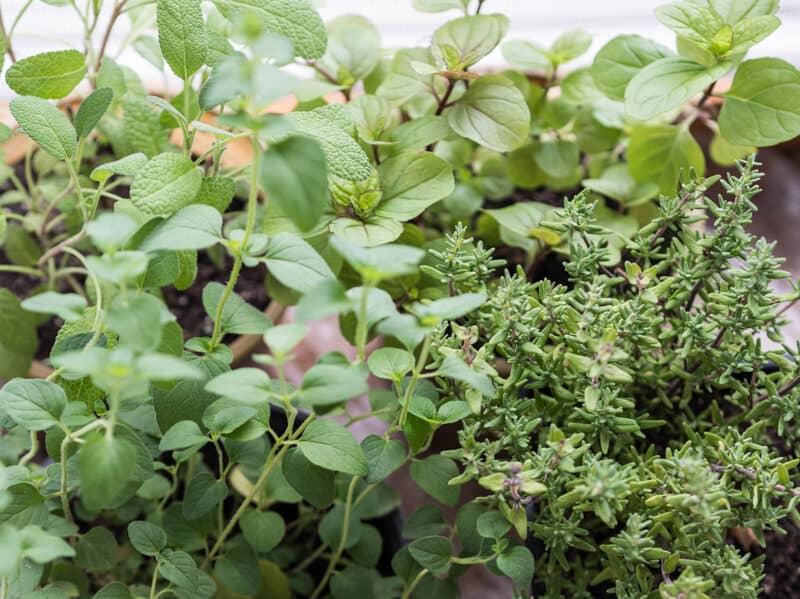
These species tend to have tough, fibrous stems and roots and do best in sandy soil that drains well. If you’re using standard potting soil, you’ll likely need to work sand and/or perlite into it for extra drainage.
Tender Herbs
In contrast to the woody herbs, these tender species have more delicate root systems and like to drink deeply. They need more nitrogen-rich compost in their soil, and amendments that help to retain moisture, such as peat moss or vermiculite.
This type of companion planting for windowsill gardens lets you keep a ton of different, delicious species within easy reach.
In fact, if you have enough space on your kitchen windowsill, consider two long planters side by side. You can have one filled with dry soil-loving Mediterranean species and another with water-loving tender greens.
By doing this, you have all the flavors you need to cook with: just reach out and snip them as needed.
That said, if other rooms in your house get better light, then set up your container gardens in the most optimal conditions possible instead.
Tea and Medicinal Herbs
The same rules that apply to culinary plants go for medicinal and tea plants as well. Are you growing several different plants for teas or herbal medicine? Then do the same research to determine their soil, sun, and water needs.
There are few things as devastating as cultivating plants for medicine, only to accidentally kill them off because they don’t have the right growing conditions.
Herb companions for windowsill gardens work the same way culinary plants and veggies do. Plant water-loving tender herbs together and woody herbs together, but don’t intermix.
Woody Medicinal/Tea Herbs:
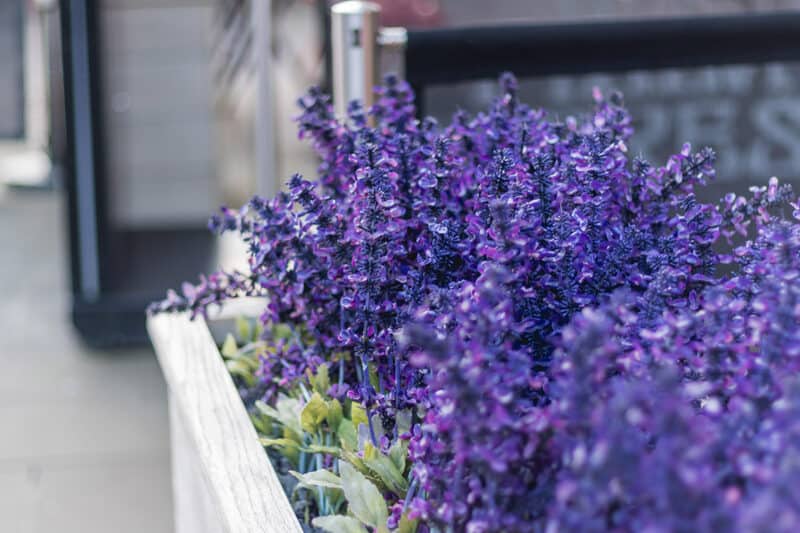
- Lavender (Lavandula spp.)
- Bergamot (Monarda spp.)
- Lemon Balm (Melissa officinalis)
- Motherwort (Leonurus cardiaca)
Tender Medicinal/Tea Herbs:
- Calendula (Calendula officinalis)
- Chamomile (Matricaria recutita)
- Echinacea (Echinacea spp.)
- St. John’s Wort (Hypericum spp.)
- Pleurisy Root (Asclepias tuberosa)
- Passionflower (Passiflora incarnata)
Here’s one recommendation, however: grow individual mint species in their own pots. Big pots.
Many species in the mint (Lamiaceae) family, which includes peppermint, catnip, sage, and lemon balm, need a lot of legroom. They’re natural spreaders and like to spread their roots out, so give them their space.
Climbing Peas, Beans, and Greens
This is one of the best pairings you can grow together. Climbing peas and beans are ideal for taking advantage of vertical indoor space.
Furthermore, since they and most greens are cool-weather crops, they need less sunshine than tomatoes and certain herbs, and fare well close to windows, even in cold weather.
They also work well together because the nitrogen that legumes help fix into the soil helps nourish green vegetables. Additionally, peas and greens also thrive in the same neutral pH soil.
Here are some fun companion planting ideas for these plants:
- Climbing garden peas
- Pole beans
- Corn salad/mache lettuce
- Mesclun greens
- Baby kale
- Arugula
Any space can be a garden with a few well-chosen planters and appropriate species. Windowsill gardens, in particular, are beautiful additions to any room. They allow you to grow all manner of gorgeous plant friends, and you can enjoy the fruits of your harvest year-round.
